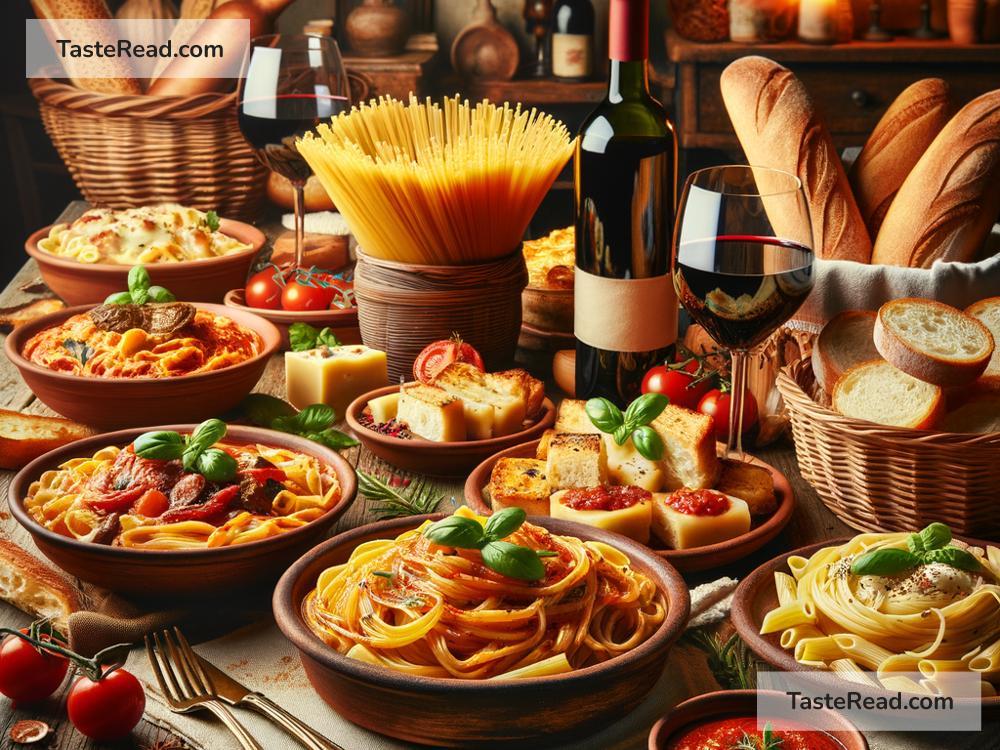The History of Italian Pasta Dishes: A Delicious Journey
Italian pasta dishes are loved all around the world for their rich flavors, comforting textures, and endless variety. From spaghetti bolognese to creamy carbonara, each dish tells a story of tradition, creativity, and the influence of history. But how did pasta become such an iconic part of Italian cuisine? Let’s explore the fascinating history of Italian pasta dishes in simple terms.
Where Did Pasta Come From?
Many people think pasta was invented by Italians, but its origins are not entirely Italian. Pasta is believed to have roots in ancient civilizations. Historians say that people in China were making noodle-like food thousands of years ago, possibly as early as 2000 BCE. This sparks the idea that Marco Polo, the famous Venetian explorer, may have brought pasta back to Italy after his travels to China in the 13th century.
However, there is evidence that Italians were already eating a form of pasta before Marco Polo’s time. In ancient Rome, there was a dish called laganum—flat sheets of dough that were baked and eaten with sauces. While this wasn’t quite the pasta we know today, it’s clear that Italians have been making their version of noodles for centuries.
The Birth of Dry Pasta
The pasta we know today—made from durum wheat and water—began to take shape in southern Italy during the Middle Ages. Durum wheat grows well in the sunny Mediterranean climate, and it produces a firm type of pasta that can be dried and stored for long periods. This made it perfect for people to stock up on food during uncertain times.
By the 13th century, pasta-making had become popular in Sicily and Naples, and dried pasta was traded across the region. The ability to dry and store pasta meant it could be transported far from where it was made, helping it spread across Italy and beyond.
How Pasta Became Italian
One reason pasta became such a big part of Italian cuisine is its versatility. Pasta can be shaped in dozens of ways—long strands like spaghetti, short tubes like penne, or flat sheets like lasagna. Italians began pairing pasta with other local ingredients, particularly olive oil, cheese, garlic, tomatoes, and seafood. These combinations created a unique flavor that felt distinctly Italian.
Tomatoes, however, weren’t originally part of Italian pasta dishes. Tomatoes originated in the Americas and were introduced to Europe in the late 15th century after Columbus’s voyages. At first, Europeans were suspicious of tomatoes and thought they might be poisonous. It wasn’t until the 18th century that Italians embraced tomatoes as an essential ingredient, and they completely transformed the way people ate pasta. Imagine spaghetti without tomato sauce—it’s hard to picture now!
Regional Pasta Traditions
Italy is a country of regions, each with its own traditions and specialties when it comes to pasta dishes. Northern Italy favors rich, creamy dishes, while southern Italy sticks to simpler, tomato-based sauces and olive oil. Let’s take a look at some famous pasta dishes from different parts of Italy:
- Naples: Spaghetti with tomato sauce, also known as spaghetti al pomodoro, is a classic dish that owes its roots to southern Italy.
- Rome: Carbonara is a Roman specialty that’s made with eggs, cheese, black pepper, and pancetta (Italian bacon). It’s a simple yet delicious dish.
- Bologna: In northern Italy, Bologna is famous for its rich meat ragu served with wide, flat noodles called tagliatelle. You might know this dish as “spaghetti bolognese,” though Italians prefer tagliatelle for the sauce.
- Sicily: Sicilian pasta often includes seafood, capers, or eggplant. A popular example is pasta alla Norma, a dish made with tomato sauce, fried eggplant, and ricotta salata cheese.
- Liguria: In the Ligurian region, pesto sauce—made with fresh basil, garlic, olive oil, pine nuts, and Parmesan—is often served with pasta like trofie.
Changing Times and Global Fame
By the 19th century, pasta was widely enjoyed across Italy. Industrial pasta production began to emerge, making pasta affordable and accessible to everyone. Immigrants from Italy carried their beloved pasta recipes to America and other parts of the world in the late 19th and early 20th centuries, introducing international audiences to dishes like spaghetti, lasagna, and ravioli.
Over time, Italian pasta dishes became symbols of comfort food. Restaurants serving Italian food popped up in cities everywhere. Dishes like fettuccine Alfredo and pizza (another Italian favorite) gained massive popularity, often being adapted to suit local tastes.
Modern Italian Pasta
Today, pasta continues to evolve. Italians still uphold traditional recipes, but there’s also room for new variations. Chefs experiment with innovative sauces, ingredients, and pasta shapes. Gluten-free options and alternative flours, like chickpea and lentil, have also made pasta accessible to even more people around the world.
Despite these changes, one thing remains the same: pasta is at the heart of Italian cooking. Whether you’re enjoying a humble bowl of pasta in a small Italian village or feasting on fancy ravioli in a high-end restaurant, there’s no denying the timeless appeal of Italian pasta dishes. They’re more than just food—they’re history on a plate.
Pasta has come a long way, and its journey shows how food connects cultures, adapts to new circumstances, and becomes part of people’s lives. Next time you sit down to enjoy a plate of spaghetti or penne, take a moment to appreciate the rich history behind every bite. Buon appetito!


